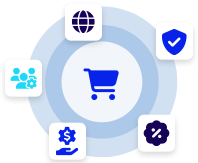Data pipelines are a series of processes that move data from one system to another, ensuring it flows smoothly and is ready for use.
Think of them as digital highways that transport data from different sources like databases, cloud services, and APIs into a central storage or analytics system. They automate tasks such as extracting, transforming, and loading data, commonly referred to as ETL.
For example, a SaaS company might use a data pipeline to collect customer interactions from its website, support platform, and CRM, integrating data into a single dashboard. This streamlined flow enables quick analysis and decision-making.
How Data Pipelines Work
A typical data pipeline starts with data extraction, where raw information is pulled from various sources like web applications, servers, or third-party services. Next comes transformation, where the data is cleaned, formatted, and structured for analysis. This step may involve removing duplicates, standardizing formats, or aggregating data for reporting.
Finally, the processed data is loaded into a storage system, such as a data warehouse or data lake, where it’s ready for analysis. Modern data pipelines often operate in real time, enabling up-to-the-minute insights that help businesses stay competitive.
Why Data Pipelines Matter
Data pipelines are crucial for businesses aiming to make data-driven decisions. Without them, integrating data from different sources would be a manual, time-consuming process prone to errors. By automating the flow, companies can focus on extracting valuable insights rather than managing data logistics.
Additionally, pipelines enable businesses to transform data for analysis in ways that align with their goals, whether it’s generating sales forecasts, tracking customer behavior, or optimizing marketing campaigns. As data volumes grow, having a well-designed data pipeline becomes essential for scaling operations efficiently.













